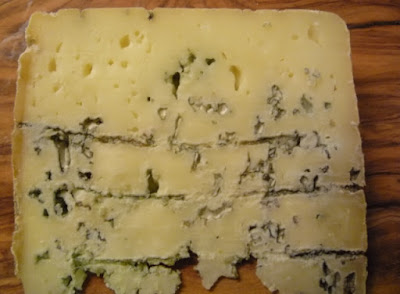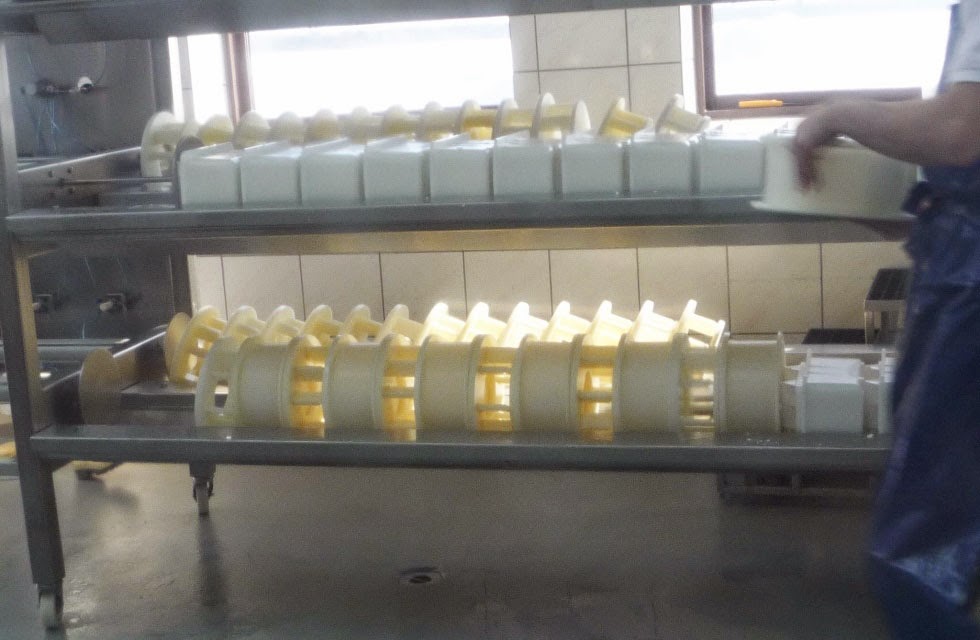Frittata is an
egg-based Italian dish similar to an omelette but with added ingredients such
as cheese, meat and vegetables. The word "frittata" is derived from fritta
and roughly translates to "egg-cake". It is also very similar to the
Spanish 'tortilla de patatas', which
is a thick egg omelette made with potatoes and onions.

The difference between a frittata and a traditional omelette is
the frittata is served open-faced like an egg-pizza. It is not folded over like
an omelette to enclose its contents, but rather it is either turned over or
even baked in the oven. A frittata always contains additional ingredients that
are cooked in the skillet and combined with the raw egg mixture, rather than
being laid over the nearly-cooked egg mixture before it is folded as in an
omelette. Also, a frittata is cooked over a very low heat, slower than an
omelette and is usually also baked for several minutes or grilled briefly to
set the top layer. Unlike an omelette which is served whole, a frittata is
served divided into sliced wedges and can be served hot, warm, at room
temperature or even cold.
The range of possible ingredients for a frittata is limitless; from
broccoli, potatoes, zucchinis, onions, asparagus, mushrooms, leeks, peppers,
spinach, etc. A frittata is quite the versatile dish as it can be served for
breakfast, lunch or for dinner accompanied with a salad.
A frittata is also an excellent quick meal, as long as you have a
few vegetables and any cheese on hand. It's also a great way to use up leftovers,
from cooked pasta to any cooked or raw veggies to throw together in a skillet
and you have a frittata on the table in 20-30 minutes.
One frittata makes roughly six servings. Don't worry the leftover frittata is nearly
as good as when it's straight from the oven. Many people actually believe that
the flavour of a frittata improves as it sits.
Below is a recipe for a potato, onion, asparagus frittata using one of Quebec's finest little artisan goat-milk cheese, the Chèvre À Ma Manière. I love it. Hope you like it.
Chèvre À Ma Manière, Potato & Asparagus Frittata Recipe
- 2 tablespoons olive oil
- 1 pound of potatoes (peeled and cut into 1/4-to-1/2-inch cubes)
- 1 small onion, or more to taste, chopped
- 1 pound asparagus, trimmed and cut into 2-inch pieces
- 4 to 6 eggs (depending on
how many servings you need, or if you prefer more veggies than egg)
- 1 Chèvre À Ma Manière cut into small cubed pieces (if substituting
with another cheese you can use 1/2 cup to 1 cup of grated cheese)
- Salt and freshly ground black pepper to taste
- For additional flavour to your frittata you can add fresh herbs
or spices. Either chopped fresh basil, parsley, rosemary, turmeric or tarragon
can be added to your vegetables when cooking.
Instructions:
Preheat oven to 350 degrees F. Coat a 10-inch heavy ovenproof
skillet, preferably non-stick or cast-iron, generously with oil, about 1 to 2
tablespoons. It is recommended to use a cast-iron pan or an oven-safe non-stick
skillet. If you are using a stainless steel pan, you'll need extra oil to make
sure the eggs don't stick to the pan, but remember it must be oven safe.
Peel potatoes and cut them into 1/4-to-1/2-inch cubes.
Heat the olive oil in a skillet over medium heat; cook and stir
the cubed potatoes in the hot oil until the potatoes begin to brown lightly,
about 10 - 12 minutes. Add your onions and cook another 4 more minutes. Season
the frittata with salt, pepper and herbs. Add the asparagus and continue
cooking until the asparagus is tender, another 5 to 7 minutes;

If you're in a rush you may want to shred your potatoes instead of
cutting them in cubes, to save time on cooking the potatoes in the skillet. Or
you can also save time by boiling your potatoes.(Put the diced potatoes in a
pot, cover with cold water, about an inch above the top of the potatoes. Cook
over medium-low heat, until the potatoes are tender but not falling apart, 5 to
7 minutes; drain and pat dry. If using boiled potatoes you will add the cooked
potatoes to your frittata only after any uncooked veggies that you include have
been cooked. Add potatoes, stirring occasionally, until the potatoes begin to
brown slightly, cook about 4 minutes more in the skillet.) You will be saving
time but your potatoes will be missing that little crispy crunch.
Whisk together eggs, salt, pepper, herbs or spices (optional) in a
large bowl. Eggs for frittata should be beaten vigorously to incorporate more
air than traditional omelettes, to allow a deeper filling and a fluffier
result.
Evenly pour the egg mixture over the vegetable mixture in the
skillet. Cook, over medium heat, tilting the pan and lifting the edges with a
spatula to let the uncooked egg flow underneath. Cook 2 to 3 minutes. Reduce
heat and cook, covered, until it appears mostly set with a moist center and
top. Add cheese to top of frittata and cook covered for 3 to 5 minutes
more.
Remove lid and place the skillet in the pre-heated oven for approx.
5 to 8 minutes. Until the eggs puff and are set in centre and the cheese is
golden brown.
Remove from oven and cut in 6 to 8 wedges. Serve straight from the
skillet.















































